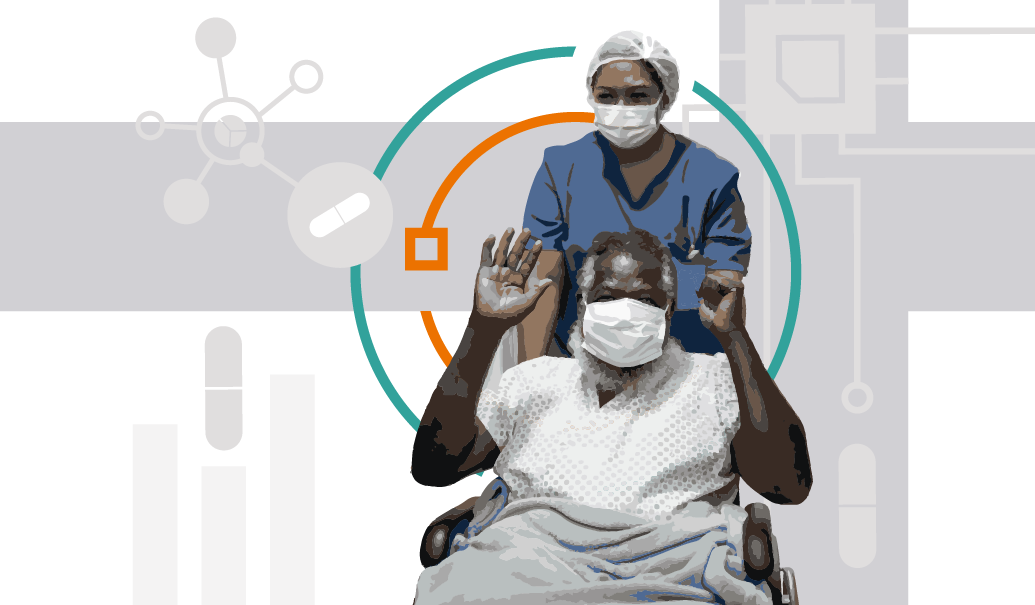We’ve all been there: We’re online and we need to find something quickly. As we’re searching, the right ad pops up at the right time with the product or information we’re looking for.
In our daily lives, we’re all customers. We have more information than ever before and more ways to quickly get what we need when we need it. Our experiences are being orchestrated behind the scenes by marketers using a variety of tools to direct a positive customer experience, from recommendation engines that tell us what products we are going to love to immediate customer support via chatbots. Those orchestrated customer experiences are flexible and adaptive, meeting us where we are and with what we need in that moment.
But while other industries have made these advancements, pharma has lagged. Why has it lagged when pharma is richer in data than many other industries? The reasons are complex. Part of the problem is structural. Pharma organizations have grown up in a model that has created highly functional silos, many of which are involved in smaller pieces of the end-to-end marketing process. As a result, marketing teams are left to focus on two things: sales messaging and direct-to-consumer programs. Many other aspects of marketing, such as lead generation or direct sales, are not in their control.
Another part of the problem is that pharma marketing has aimed for simplicity, designing for levels of customization and scale that it believes traditional sales reps can handle. Practically speaking, this means creating a handful of customized segments rather than true personalization. Ultimately, this constrains pharma’s total view of individual customers.
Finally, and perhaps most importantly, the center of the commercial model in pharma has been the sales rep. While the sales-led model has delivered a positive return on investment until now, it is reaching a value ceiling and limits the opportunity to create an optimal experience for each individual across the channels available.
Reality check: Why a new pharma marketing model is overdue
A reality check is on its way, coming from external forces that will require pharma to change. At a time when 72% of patients want systems more focused on prevention, the experience of care is pushing them further from treatment at the right time—or from any treatment at all. In fact, 44% of healthcare consumers in the U.S. will only engage with the healthcare system when they are sick. Consumer lack of engagement has a future cost. Pharma needs to be part of helping close that gap. In many categories, this means a much more sophisticated patient and customer strategy.
At the same time, the demands of science are compelling us to change the processes and activities marketers rely on today. In the near future, more than 85% of launches through 2026 are expected to be nano- and micro-launches (under $500M in sales) as opposed to blockbusters, according to ZS analysis. What pharma has done before will not work in this paradigm.
Over time, pharma has tweaked its customer-facing model, complementing and building on the role of the rep to drive changes internally and on the ground with customers. Omnichannel is a start, but digital channels alone will not be sufficient to deliver against all customer needs and all the types of customers we need to serve in the increasingly complex healthcare ecosystem. In fact, customers of all types demand greater levels of customization and personalization than pharma is currently able to give them. Pharma needs to reinvent its marketing model quickly to adapt to the internal and external changes ahead and to meet customers where they are.
For real change, begin by breaking foundational assumptions
How does pharma change and reinvent marketing? To create real change, pharma first needs to break some of its foundational, even unspoken, assumptions. Today, typical sales-rep-centered operations often assume that “sales owns the customer.” This means most customer-facing activities are delivered through sales reps, regardless of the customer’s activity or context (needs, practice setting, patient mix and so on). The sales rep also collects a limited amount of data for each customer and focuses mainly on actions based on product usage. All customer intelligence resides with individual sales reps, which means the organization lacks a holistic view to put the pieces together to market and sell more effectively.
What if we had a new model where the relationship with the customer resides with the organization? That is, the organization draws in the rich knowledge of the customer from all touchpoints, including the rep, to map unique experiences and direct the most valuable interactions from the center. In this model, the organization—the functions, the people, the data and analytics engines—supports both customer engagement and brand awareness. Organizations would rely on analytics and predictive AI to deliver a more-personalized customer experience and begin to gather individual customer behavior intelligence for a competitive edge.
The enterprise should lead the strategic direction, the personalization at scale and the engagement planning in the heterogeneous ways that customers need. A reimagined marketing function will be best positioned to take this on.
Many businesses have led the way, like GE, which in the 2000s refashioned its healthcare unit. Part of its revamp included turning its product focus into a customer focus, and in doing so expanded the role of marketing as a critical function that worked across silos, making customer insights relevant and meaningful to the entire organization to help drive innovation.
What will it take for pharma to get there? Here are three building blocks that organizations must establish so that pharma marketing can rise to the next level.
1. Restructuring to put the marketer at the center of customer engagement
Pharma has talked about customer experience for a long time, but this transformation is something more. It’s changing the organization’s talent capabilities and structure and putting true customer marketing at the center of how a company strategizes, plans and deploys against the bigger picture of its portfolio, company and customer relationships.
This means organizing marketing in a way that continues to deliver for the product but also allows it to design for the customer, all while encouraging the responsibility and accountability that come with owning the relationship.
The skills needed for product strategy are different than those required for customer engagement design. We anticipate that organizations will start to bifurcate roles and responsibilities around these two missions:
- Product strategists will continue to focus on deeply understanding and shaping the value that their products bring to the market over and above the competition and how that connects to customer needs at an aggregate level across the market.
- Customer engagement designers will fill a new role that will focus on designing personalized customer engagement. They will create smart, predictive and flexible customer journeys based on a deep understanding of the diversity of their customers, their interests and routes of engagement (e.g., conferences they’ll attend or clinical trials they’re involved in). This role will hold the customer perspective and will be inclusive of the full portfolio for that given customer.
The product strategy talent already exists within pharma marketing organizations today, but the engagement design roles will call for a new kind of talent that is more savvy in channel and content expertise, that brings a human-centric design mindset and that understands customers at an n=1 level.
2. Driving the customer experience
This new kind of marketer will have a different mindset than what exists today, as well as skills that will help them play a critical role—taking back the processes of planning and developing strategy to deliver on the design and development of more personalized experiences.
This building block includes three components:
- Translating the annualized planning process and building the engagement planning process
- Changing the way pharma works with agencies to develop customized communications
- Starting to plan engagement from the center
Rethink the customer engagement planning process. Today, pharma organizations tend to stop short in their planning process and tactical design. Brand strategies often end at the development of strategic imperatives and critical success factors. These are then handed off to ad agencies to develop a limited set of messages and tools for the sales teams and a handful of emails. The digital teams or marketing operations are then left to work with this limited set of messages, trying to drive personalization by chopping two to three emails into components with limited direction on how this connects back to the strategy or desired behavior change at the customer level. The brand teams operate in a silo from the digital teams, and leadership ultimately questions the value they are getting from their omnichannel programs. None of this is pharma directing the customer’s experience in the way it could or should.
This model is broken because there is no link between the strategy and the tactical execution in favor of the customer. This is where the need for a new customer engagement planning process comes in and where the role of the customer engagement designer will shine. The customer engagement designer will drive a new process in which they define the routes of engagement with customers. They will set the communications strategy against those routes, and they will define the triggers and preference analytics that will direct what to serve up to different customers and when. This process will be supported by the development of more modular content. It will provide the blueprint for marketing operations and digital teams to effectively deploy all the pieces of the engagement journey puzzle.
Work differently with agencies. This new model will also crack open the way pharma organizations purchase creative work, breaking the traditional agency of record model and moving to more modular buying patterns. Compliance and approval processes will need to adapt to support shorter timelines for review, more approvals at aggregate levels and expediting or removing the need for independent asset-level reviews.
Plan customer engagement from the center. Planning for customer engagement looks very different after stepping back and assessing the sales rep and all other roles and methods of communication for the highest value they can add at different contexts. Then the marketer is free to think about and leverage the insight and data that’s been collected about customers. And they can plan for and deploy an engagement strategy that makes the most of each channel. This process reduces dependence on the sales reps who are inherently siloed in their view of company engagement with the customer, and it better meets customers where they are.
3. Tying in technology that creates more complete views of customers and enables management at scale
Marketing organizations have historically looked at customers in aggregate, often going only as deep as defining three to four segments that they plan and execute against. As pharma shifts the ownership of the customer from sales to marketing to drive more personalization, it also needs to build and develop the tools for managing individual customers at scale. Today’s marketer cannot do this alone—they will need to leverage technology as they never have before. It isn’t just a matter of digital acumen, but a challenge to create new processes for marketing at scale.
There are three ways that we expect technology to step in and enable the customer engagement designer to drive personalization.
Creating databases for more complete views of the customers. We expect to see the breakdown of functional silos across marketing, sales and medical affairs so that organizations are building toward more unified, consistent and complete views of customers. We also expect these customer databases to be set up in a way that enables the customer engagement designers to look at their customers through the lens of the key levers that are stopping them from moving forward in their targeted customer journey. This will help the engagement designer understand who is getting stuck where and what action to take to move customers forward again.
Planning more of the customer engagement journey within tools. Today much engagement planning still happens in PowerPoint or Excel files. To design for customers at scale across channels, content and triggers, we expect to see more use of engagement design tools that seamlessly integrate with downstream marketing operations systems.
Leaning on technology to manage and monitor customer interactions. This will include predictive engines that will build on the customer data set to best select the right tactic, channel, message or content they will receive. These engines will trigger the deployment or field suggestion to drive that engagement forward. It will not be enough to manage the deployment. Customer engagement designers will need to set the success metrics and feedback loops that are essential for monitoring progress along the customer journey, empowering them to optimize the engagement process.
The next steps toward pharma’s commercial model of tomorrow
When Microsoft had a changing of the guard, newly installed CEO Satya Nadella brought a new mission: To empower every person and every organization on the planet to achieve more. Subsequently Microsoft, too, made the move to focus on experience and engaging customers throughout their personal journey. This required pivoting functions, silos and ways of working. It created a Global Demand Center, which is a centralized, connected sales and marketing engine that “owns” Microsoft’s customers.
Not everyone is on the path to a GE- or Microsoft-scale transformation. But the industry must get in step with what marketers in other industries already know: Personalization isn’t going away. Customers expect that companies will find ways to engage with them where they are and provide them with the most valuable thing at the right time.
Regardless of where they are in their journeys, here are a few things companies can do now to meet their customers where they are and to be competitive in the market going forward. Some critical first steps to get started include:
- Begin building the customer engagement planning process. This should include setting a view for what an excellent customer engagement plan looks like and mapping the process of integrating the marketing operations and digital functions.
- Start hiring a new kind of talent (even if you aren’t changing your roles just yet). Look for individuals with human-centric design backgrounds, channel acumen and test-and-learn capabilities.
- Define the new KPIs that will be important for measuring customer engagement success. Then start tracking them, such as Net Promoter Score, customer satisfaction or customer advancement along the engagement journey.
Reinventing marketing is about more than marketing itself. It is about transforming at the center of the enterprise and creating new capabilities to truly take advantage of an organization’s tools and channels and the latest advancements in customer experience that other industries are leveraging. Many transformations have altered the customer-facing model, but the commercial model of the future needs marketing to be the orchestrator of customer connection, meeting customers where they are. In doing so, it can prepare pharma to play a role that its customers will depend on and deeply value.
Join our webinar to learn about pharma’s next evolution to reimagine marketing.
Add insights to your inbox
We’ll send you content you’ll want to read – and put to use.















